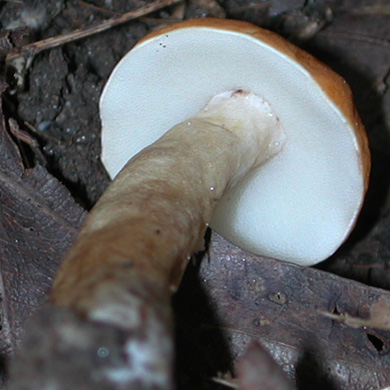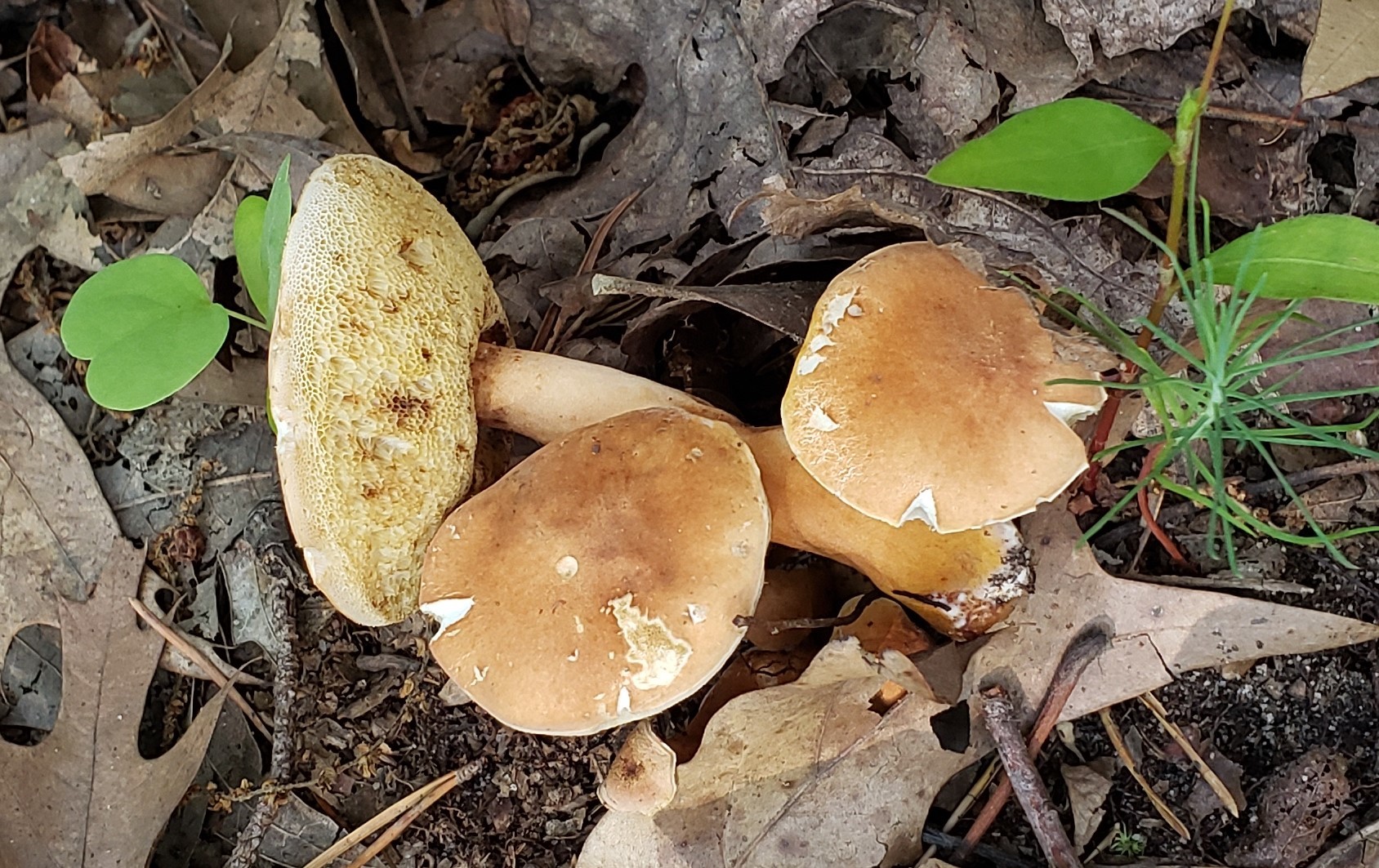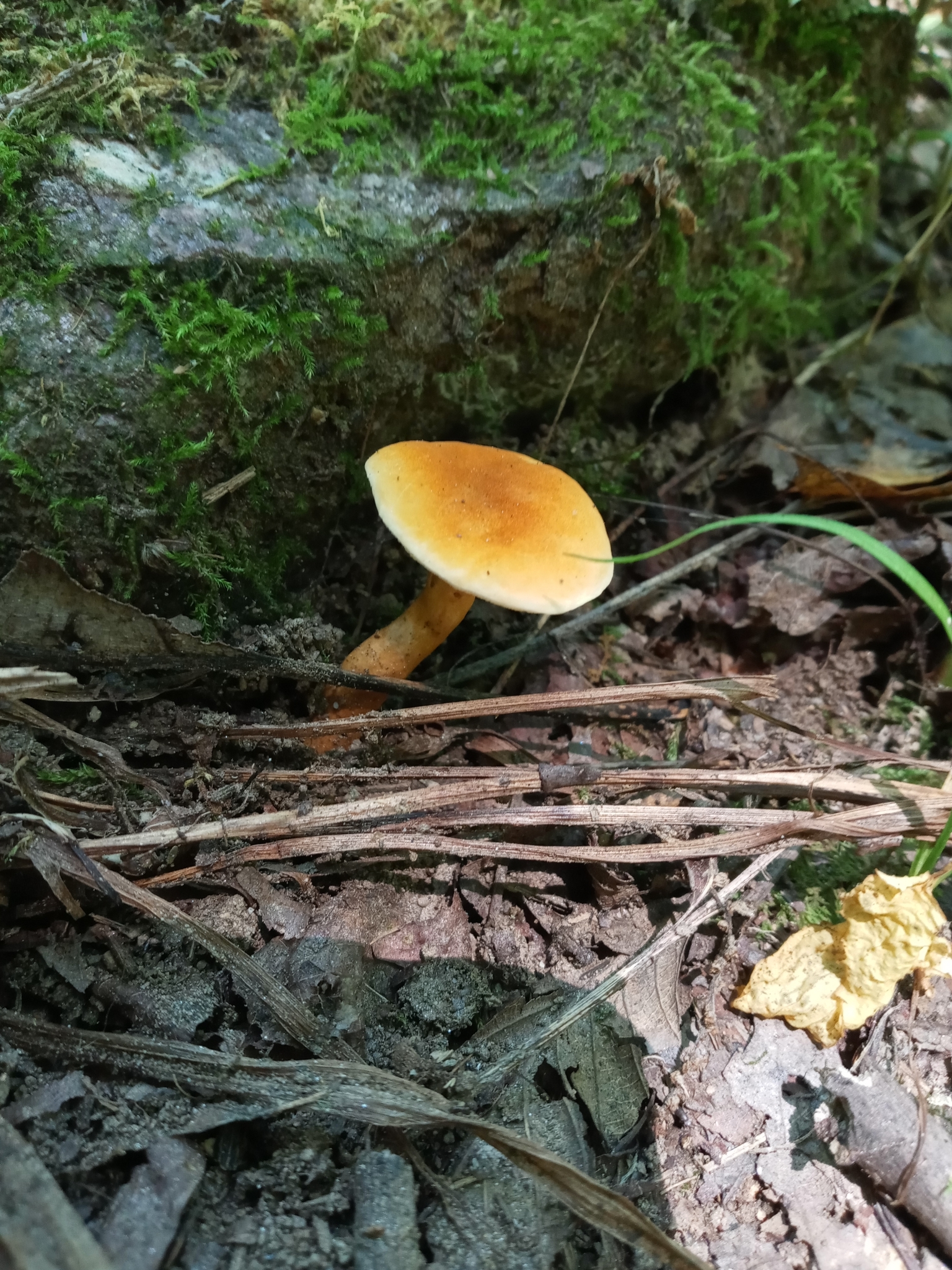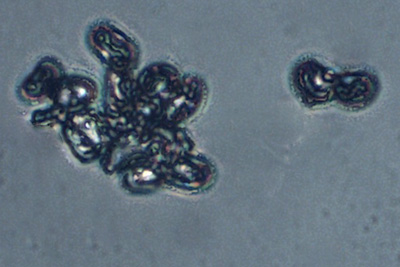Map Snapshot










89 Records
Status
Found solitary or in scattered groups on ground in mixed hardwood/coniferous forests.
Description
Cap: Chestnut/orange-brown, convex (flat in age), finely velvety, dry; margin often splits in age; flesh white, brittle. Pores: Whitish/buff, circular. Stalk: Color of cap or lighter at apex, surface uneven, thicker in middle. Cap stains yellow, then bleaches white with KOH (J. Solem, pers. comm.).
Seasonality Snapshot
Source: Wikipedia
| Gyroporus castaneus | |
|---|---|

| |
| Scientific classification | |
| Domain: | Eukaryota |
| Kingdom: | Fungi |
| Division: | Basidiomycota |
| Class: | Agaricomycetes |
| Order: | Boletales |
| Family: | Gyroporaceae |
| Genus: | Gyroporus |
| Species: | G. castaneus
|
| Binomial name | |
| Gyroporus castaneus | |
| Synonyms | |
|
Boletus castaneus Bull. (1787) | |
| Gyroporus castaneus | |
|---|---|
| Pores on hymenium | |
| Cap is convex or flat | |
| Stipe is bare | |
| Spore print is yellow | |
| Ecology is mycorrhizal | |
| Edibility is choice but not recommended | |
Gyroporus castaneus, or commonly the chestnut bolete, is a small, white-pored mushroom in the Gyroporaceae of order Boletales. It has a brown cap, and is usually found with oak trees. It differs from the true boletes in that the spores are a pale straw colour.
Taxonomy
[edit]The species was described initially by the French mycologist Jean Baptiste François Pierre Bulliard (1742–1792). Formerly a member of the family Paxillaceae, research now places this mushroom in Gyroporaceae. Gyroporus means 'having round pores', and castaneus is a reference to the chestnut colouration.
Description
[edit]The cap is from 3 to 10 cm in diameter, and pale to rusty brown in colour, which becomes darker with age. The stem is a similar colour, although it may be lighter at the apex. If the stem is cut vertically, it is usual to find several cavities of differing sizes inside. Both the cap and the stem have a tendency to crack or split in dry periods, or with age. The pores are small and white; they become dirtier with age, and are not attached to the stem. They darken slightly when pressed. The tubes are also whitish, and the spore print is pale yellow to straw. The flesh is firm,[1] and does not change colour on cutting. The photograph on the right shows the chunkier form; a slender form also occurs.

Distribution and habitat
[edit]The mushroom is found occasionally in Britain and throughout continental Europe, as well as eastern North America, but it is rare in western North America.[2] It grows in small groups, or singly, in an ectomycorrhizal relationship with oaks (Quercus). It prefers acid and sandy soils, and fruits from summer to autumn. In New Zealand, it is found in association with Leptospermum.[3] In Asia, it has been recorded from Taiwan.[4]
Gyroporus castaneus has been included in the Moscow Oblast's and the Russian Federation's Red Book and several other countries' Red Lists, including those of Norway and Montenegro.[5][6][7]
Edibility
[edit]Gyroporus castaneus is edible, and highly regarded by most authors;[8] it is said to taste pleasantly nutty when young.[citation needed] However, Marcel Bon, in his 1987 book The Mushrooms and Toadstools of Britain and North Western Europe, records it as suspect,[9] so it may be worth applying caution, by eating a very small amount initially. There is also reportedly a poisonous strain of this mushroom in coastal Portugal.[10]
See also
[edit]References
[edit]- ^ Roger Phillips (2006). Mushrooms. Pan MacMillan. ISBN 0-330-44237-6.
- ^ David Arora (1986). Mushrooms Demystified. Ten Speed Press. ISBN 0-89815-169-4.
- ^ McNabb RFR. (1968). "The Boletaceae of New Zealand". New Zealand Journal of Botany. 6 (2): 137–76 (see p. 166). Bibcode:1968NZJB....6..137M. doi:10.1080/0028825X.1968.10429056.

- ^ Yeh K-W, Chen Z-C. (1980). "The boletes of Taiwan" (PDF). Taiwania. 25 (1): 166–184. Archived from the original (PDF) on 2015-11-26. Retrieved 2015-11-12.
- ^ "Каштановий Гриб". Red Book of Moscow Oblast. Archived from the original on May 17, 2008. Retrieved September 5, 2008.
- ^ "The Provisory Red List of Endangered Macromycetes of Montenegro" (PDF). Montenegrin Mycological Center. Retrieved September 5, 2008.
- ^ "Red List of Threatened Fungi in Norway". Fungiflora 1998. Retrieved September 5, 2008.
- ^ Phillips, Roger (2010). Mushrooms and Other Fungi of North America. Buffalo, NY: Firefly Books. p. 274. ISBN 978-1-55407-651-2.
- ^ Marcel Bon (1987). The Mushrooms and Toadstools of Britain and North Western Europe. Hodder and Stoughton. ISBN 0-340-39935-X.
- ^ Thomas Laessoe (1998). Mushrooms (flexi bound). Dorling Kindersley. ISBN 0-7513-1070-0.


















